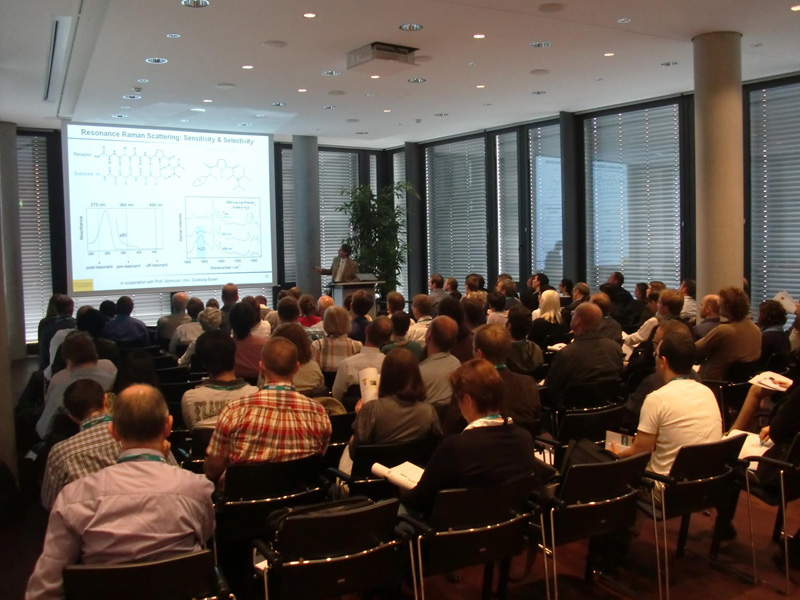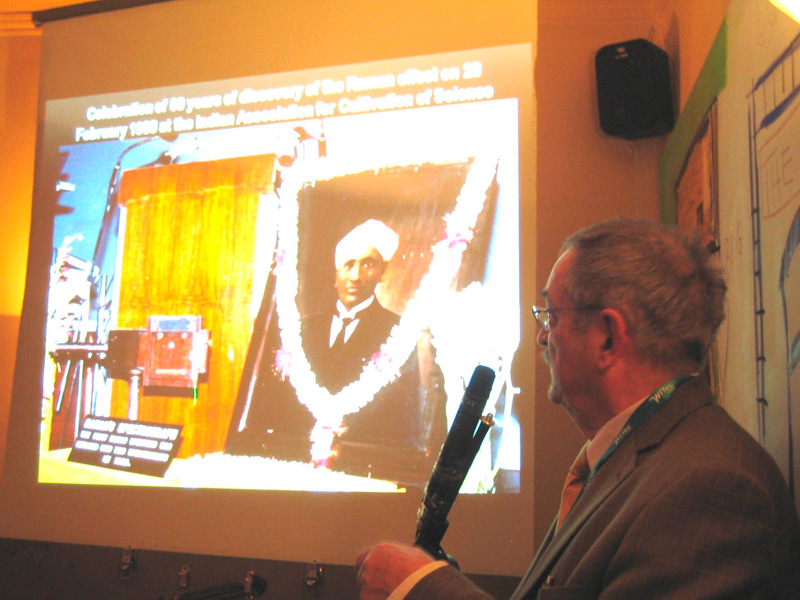Ninety-five delegates attended the 8th Confocal Raman Imaging Symposium in Ulm, Germany, from 5 to 6 October organised by WITec. Featuring a global line-up of Raman Imaging experts, the symposium gave scientist the opportunity to see the newest applications and relevant instrument configurations.

Professor Sebastian Schlücker's opening keynote presentation.
Opening the conference was a keynote talk from Professor Sebastian Schlücker from the University of Osnabrück, Germany, looking at the fundamentals of Raman spectroscopy and its application in microscopy. Schlücker directly addressed the delegates by not only highlighting classical and quantum-mechanical descriptions of the Raman-effect but also reviewing the theory with some quiz questions. Dr Olaf Hollricher, WITec Managing Director R&D, then outlined the necessity of throughput-optimised system configurations relevant for diffraction-limited and high-resolution confocal Raman Imaging. For more comprehensive sample analysis, combining Raman with other imaging techniques is essential. Reflecting this development Dr Ute Schmidt, WITec Applications Manager, discussed the possibilities of Raman-AFM combination followed by Dr Thomas Dieing, WITec Director Customer Support, who introduced the new TrueSurface Microscopy mode for topographic confocal Raman Imaging.
In the first applications session related to materials science, Dr Lugstein from the University of Vienna, reported on the application of Raman spectroscopy to study nanowires with a special focus on detectable stress fields. Dr Adam Schwartzberg from Sandia National Labs, Livermore, USA, provided insight into hyperspectral imaging on the nanoscale, also highlighting near-field Raman Imaging with active plasmonic probes. In photovoltaic research, Raman Imaging can contribute to the development of optimised solar cell devices as reported by Bernd Meidel from Schott Solar. Dr Anna Belu from Medtronic, Inc., USA, described how to characterise surfaces and interfaces of materials relevant to the medical device industry. The life science session started with a talk given by Dr Christian Matthäus from the IPHT Jena, Germany, on monitoring the intracellular lipid metabolism in macrophages with Raman Imaging and presenting results on the trans-dermal penetration of lipid derived nanoparticles. Shining light on the effect of sunscreen and its distribution on human skin is the current research task of Dr Christian Adlhart of the Zurich University of Applied Science, Switzerland. In his talk he showed how Confocal Raman Imaging can contribute to reducing the amount of sunscreen needed. Finally Dr Gernot Nehrke described the spatial distribution of different mineral and organic phases within marine biogenic carbonates.
During the one hour contributed poster session with nearly 20 presentations the participants discussed intently the numerous applications and not a few delegates were amazed at the variety of possible successful applications of Raman Imaging in the various research areas. Another highlight of the first day was the dinner talk given by Professor Wolfgang Kiefer who even met Sir Chandrasekhara Raman personally and was one of pioneers of Raman spectroscopy in Germany. His eloquent and humorous historical review of Raman spectroscopy was very well received by the delegates as recounted the early days of Raman spectroscopy.

Professor Wolfgang Kiefer's dinner talk reviewing the history of Raman spectroscopy.
On the second day an extensive instrumentation, accessories and software demonstration in the WITec application labs gave the attendees an overview on how to successfully perform Raman Imaging experiments.
All in all, it was a memorable Symposium, bringing theory, instrumentation and various scientific fields of application together. Overall the participants in the Symposium enjoyed the programme and their time in Ulm as reflected in the 96% of attendees who would recommend it to a colleague.

